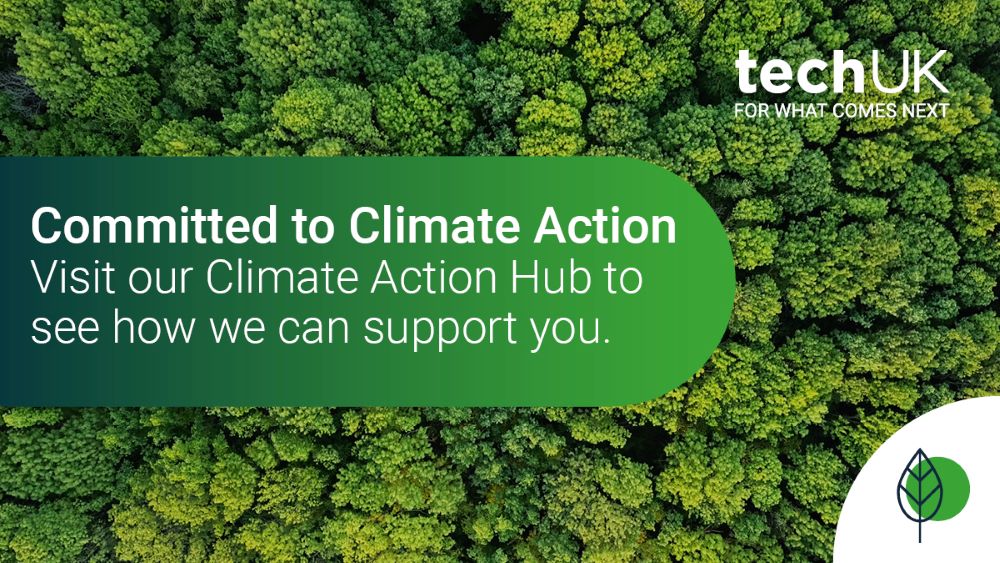Making sense of sustainability: how green is your cloud? (Guest blog from Credera)
Author: John Davies, Multi-Cloud Solution Architect Leader, Credera UK.
This blog explores how leveraging the benefits of the Cloud can help organisations work towards sustainability goals.
Headline takeaways:
- The “Digital Revolution” has rewritten the IT landscape via Web 1.0 and, more significantly, Web 2.0, leading to “data becoming the new oil of the digital economy”.
- Hyperscale cloud data centres are significantly more energy efficient than conventional server rooms, on-premise data centres, and co-location centres. The “Pay As You Go” consumption model incentivises organisations to right size workloads and drive further efficiencies via autoscaling and powering off systems when not in use.
- The move to exit conventional server rooms and data centres by migrating workloads to the Cloud is having a positive effect on the environment and the organisations bottom line.
- Modernising applications from Infrastructure as a Service (IaaS) to Platform (PaaS) and Software as a Service (SaaS) offerings further increases these positive effects. Advancements in PaaS serverless offerings help organisations manage IP v4 addresses, which for large multinationals can be a scarce commodity; in addition to driving down costs and, by extension, consumption and carbon footprint.
How has the “Digital Revolution” led to a sea change in the creation and consumption of data?
The "Digital Revolution" has driven exponential growth in the demand for communications, compute, and storage. Web 2.0 has created an unprecedented uptick in consumption, with the advent of always connected smart phones featuring social media and social networking driving the big data explosion. This demand will only increase further as more devices (wearables, self-driving cars, industrial connected devices, smart home appliances, etc.) are connected to the Internet of Things (IoT) for telemetry, data harvesting, and ‘over the air’ updates.
In order to store, process, and derive actionable insights from the vast amounts of data generated, businesses require data analytics and business intelligence (BI) platforms, data scientists, and data engineers.
When the Cloud was in its infancy, there were concerns that energy consumption and fossil fuel pollution would run unchecked due to the forecast growth in demand. These ideas were based on the architecture and implementation of data centres at that time. Successful campaigning by Greenpeace brought this into the consumer’s focus and resulted in increased support for the Open Compute Project; a collaborative community driving hardware efficiencies to support the growing demands. Microsoft and Google joined in 2014 and 2015 respectively.
How have data centres evolved to cope with exponential demand whilst being sustainable?
The major cloud providers have published roadmaps for 100% renewable energy supply usage, further reducing their carbon footprints by sourcing clean energy from wind, solar, and hydroelectric power.
Data centre (DC) efficiency is measured in Power Usage Effectiveness (PUE). This is the total amount of electricity consumed by a DC in relation to the total amount of electricity delivered to its equipment. PUE is always equal to or greater than 1; the closer to 1, the more efficient the DC.
Whilst PUE has remained fairly static over the past five years, different approaches are being employed to gain further efficiencies. An example of this was Google using machine learning in data centre operations from 2014, resulting in a 40% reduction in cooling energy consumption. Google has continued innovating to reach a record low of 1.10 PUE across its DC fleet in 2021, and is targeting 1.06. Over the same period, the amount of computing performed in data centres increased by 550%.
A 550% increase in computing usage with a 227% reduction in energy consumption, allied with an increase in renewable energy usage, shows that cloud can indeed have a green lining!
How can organisations take advantage of this “green lining”?
Moving to the Cloud is a mindset shift from operating on-premises workloads. Organisations that embrace the Cloud can remove hardware maintenance and replacement costs in addition to productivity costs incurred from over-sweating assets. There is no longer a need to purchase all hardware in one go and carve it up for programmes and projects, allowing for Agile programmes that benefit from “just in time” deployments.
How can an organisation with on-premises workloads start on this journey?
The move from capital expenditure to operating expenditure and the advances in hyperscale DC’s allow organisations to adopt an Agile approach to what was previously a long-term investment with lengthy lead and depreciation times.
What other benefits can an organisation see when starting their cloud journey?
The PAYG model offered by the Cloud allows for resources to be billed for the amount of time it is used - often in minutes. This allows organisations to flex up and down when required without investing in new hardware in their own DCs, removing lengthy lead times. Cost and climate-conscious organisations can use this model to their advantage:
- Rightsizing compute offerings allows the organisation to hit the sweet spot based on workload demand, optimising the cost and power requirements.
- Powering off machines when not in use pauses the compute costs and, by extension, the resources used in the DC to run the workload.
Both of these approaches allow an organisation to save money and energy consumption as well as achieve a faster time to market.
How can organisations adapt as their cloud adoption matures?
As organisations mature their usage of the Cloud through application modernisation, we see the use of Infrastructure as a Service (IaaS) being replaced with Platform as a Service (PaaS) and Software as a Service (SaaS) consumption. Refactoring workloads using PaaS provides the ability to be more economical by using autoscaling and serverless offerings as well as removing some of the administrative burden that accompanies IaaS, such as application upgrades and patching cycles.
Key takeaway
Organisations who are still servicing a sizeable fleet of servers in on premises DC’s and server rooms, could see sizeable investment and running cost savings; as well as significantly reduce their carbon footprint by migrating workloads, exiting inefficient hosting locations, and embracing a cloud-native strategy.
Learn more about how we helped our client on their way to net zero here.
Cloud Week 2023
News, views and insights on how cloud computing continues to reshape how we live and work. techUK's annual Cloud Week is an opportunity for the tech community to explore key issues in cloud and highlight new ideas and thought leadership from our members.
Cloud computing and the path to a more sustainable future
This techUK insights paper highlights the commitment of our members to a sustainable approach to cloud computing and sets out six core best practice principles for a greener future for the tech sector.
techUK - Committed to Climate Action
Visit our Climate Action Hub to learn more or to register for regular updates.
By 2030, digital technology can cut global emissions by 15%. Cloud computing, 5G, AI and IoT have the potential to support dramatic reductions in carbon emissions in sectors such as transport, agriculture, and manufacturing. techUK is working to foster the right policy framework and leadership so we can all play our part. For more information on how techUK can support you, please visit our Climate Action Hub and click ‘contact us’.
Climate, Environment and Sustainability updates
Sign-up to get the latest updates and opportunities from our Climate, Environment and Sustainability programme.
Upcoming climate events






